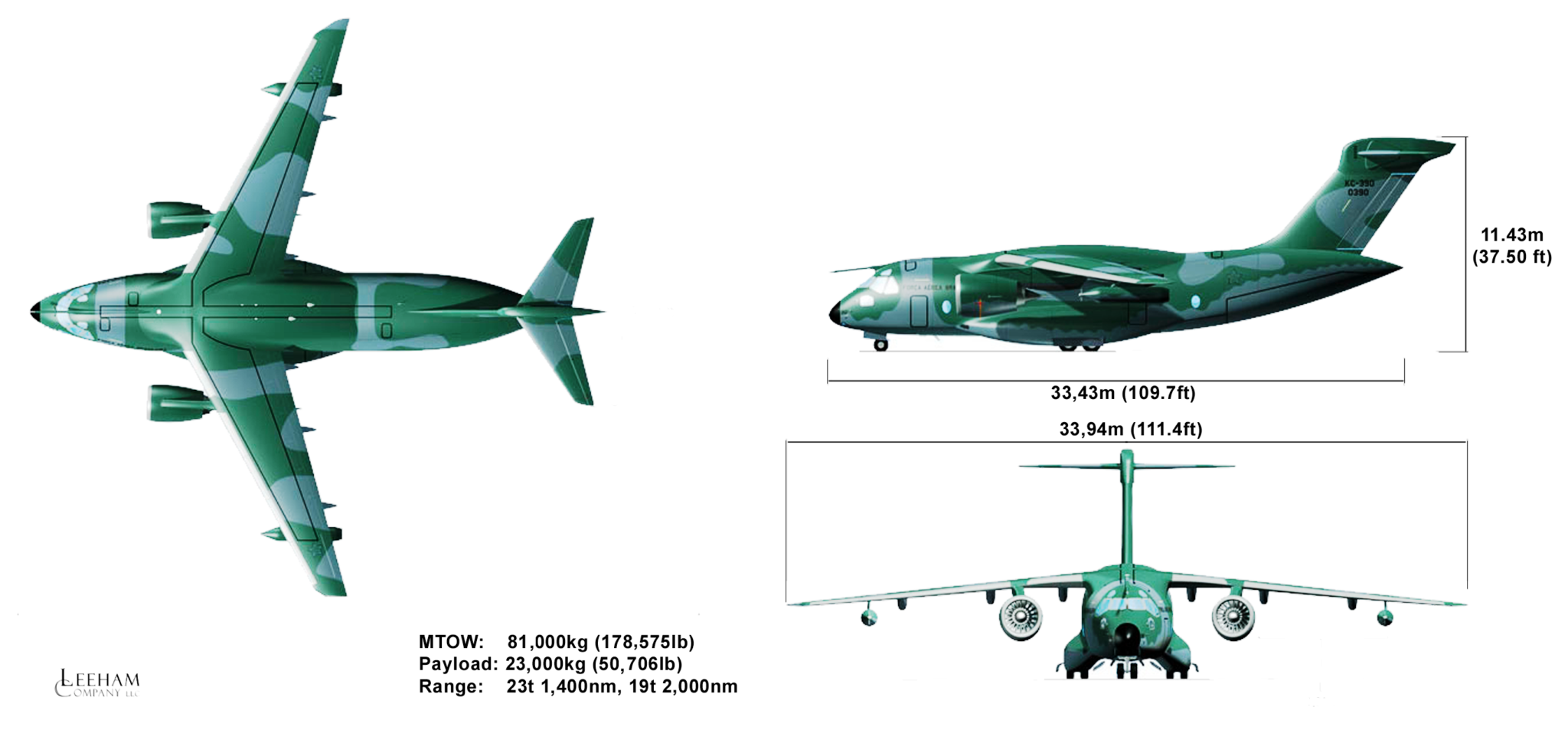Leeham News and Analysis
There's more to real news than a news release.
Embraer’s big bet on its largest airplane yet
Introduction
Embraer is days away from the roll-out of its biggest airplane project yet and one that has the potential to make its biggest inroads yet into the global defense market: the KC-390.
The airplane, with a fuselage cross-section the size of the Boeing 767, challenges the Lockheed Martin C-130, a venerable aircraft that has been updated throughout the decades since it first entered service in 1956. Despite this modernization, Embraer believes the time has come for a modern design and a multi-mission capability that far surpasses that of the C-130, with higher productivity of a jet aircraft vs a four-engine turbo-prop.
Summary
- Embraer sees a market for 728 KC-390s in 77 countries, excluding the US, Russia, China and Europe.
- The KC-390 is half the price of the Airbus A400M and about the size of the Lockheed Martin C-130.
- Launched with paid development and an order for 28 aircraft from Brazil to fulfill the country’s unique requirements.
- Typical mission capabilities will be: Cargo 7 pallets, Displacement of 80 soldiers, air dropping of 86 paratroopers, transporting 1 Black Hawk helicopter or one LAV25 or 3 Humvees, Rescue missions, Air tanking of 2 aircraft or helicopters.
- The KC-390 flies at M0.8 and will therefore finish missions in two thirds the time of the C-130 Hercules (which flies as M0.5). This will also result in more missions flown per day i.e. more airlift capacity.
The airline industry is changing and acting like real businesses to return value for shareholders
“Our industry is changing and acting like real businesses to return value for shareholders.”
It’s a remarkable statement when you think about it. But this is how Jim Compton, vice chairman of United Airlines, led off at the World Routes conference this week in Chicago.
The US airline industry for years seemed to be operated more for market share than for profit. At least this is how many chief executive officers often characterized things until after 9/11, when US carriers wrenched through the aftermath of that horrible day. Even so, CEOs often complained there was too much capacity to allow for profitable operations. It wasn’t until after the global financial collapse of 2008 that US airlines began to consolidate, reduce flights and take capacity out of the system. Profits began to return.
Odds and Ends: Order bubble, revisited; MRJ lands JAL; MH370
What order bubble, Revisited: We recently asked the question, What order bubble?
The orders don’t stop coming. Boeing landed a big fish with a large order from BOC Aviation, bringing net orders to 918–easily on the path to 1,000. Airbus lags at just over 800 net orders through July (it only reports monthly, not weekly as does Boeing), but we see Airbus hitting 1,000 this year, too. There were 121 MOUs announced at the Farnborough Air Show for the A330neo and we expect most of these to firm up, if not all. (There will likely be some swaps by Air Asia from the A330ceo to the neo, however.) We expect more A320 orders as well.
Boeing’s BOCA order was the lessor’s largest ever and included two 777-300ERs. Boeing is attempting to combine -300ER orders with 737 and 777X deals in order to bridge the production gap between the 777 Classic and the 777X.
GE Aviation and GE Engines naturally benefited from the 737 and 777 BOCA deal, since they are the sole-source engine providers on the airplanes.
MRJ lands JAL: Japan Air Lines ordered 32 Mitsubishi MRJ90s for delivery from 2021. This is the fourth customer for MRJ. JAL’s rival, All Nippon Airways, was the launch customer for the MRJ90. JAL also ordered up to 27 Embraer E-Jets.
MH370: New information emerged this week on the flight path of Malaysian Airlines MH370, which disappeared on a flight from Kuala Lumpur to Beijing and is believed to have crashed in the south Indian Ocean.
We’ve been asked by local media if MAS can survive. We believe it can, given the government backing. It’s the flag carrier and we don’t think Malaysia will allow the airline to go out of business. Korean Air Lines survived following a series of crashes and the Soviet shootdown of KAL 007 during the 1980s. MAS may become a very different airline, but we think it will continue.




